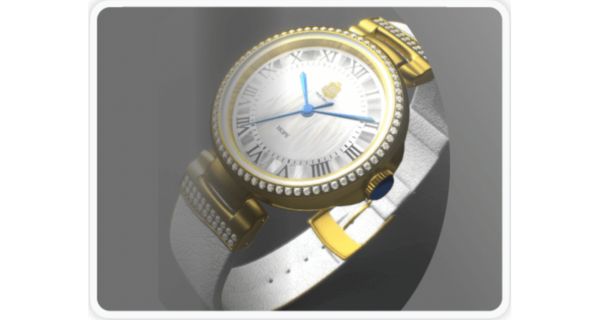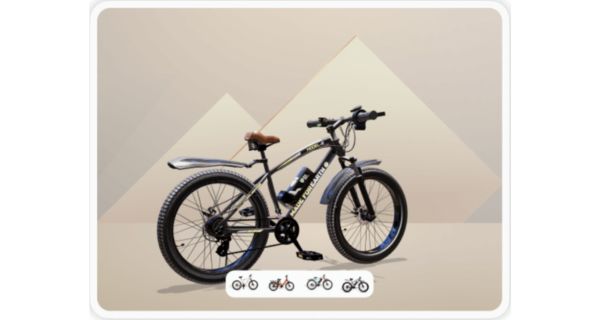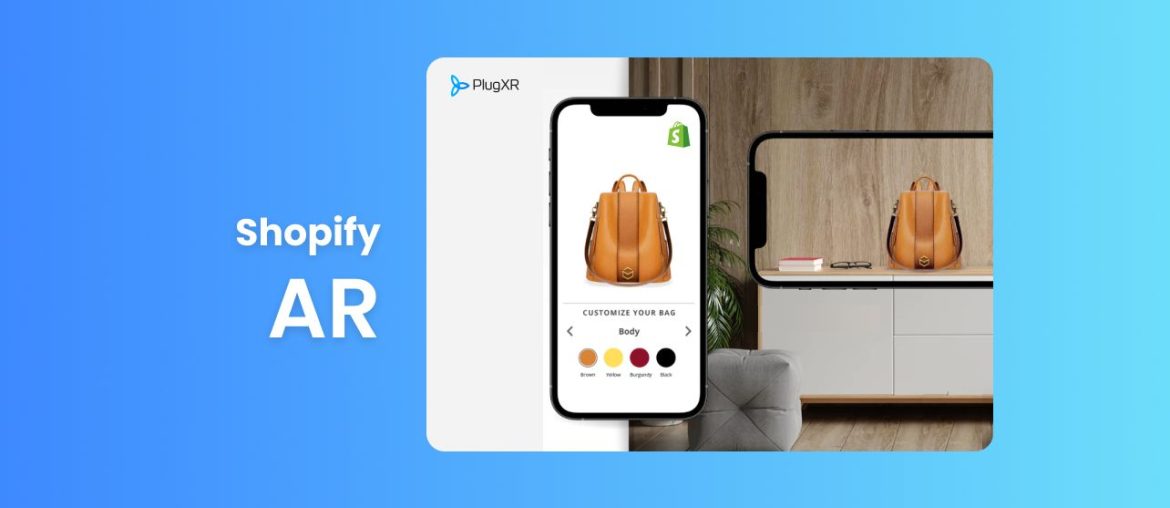Shopify has always ensured that small and medium-sized businesses keep up with large enterprises. Back in 2004, when building a simple website was a lot of work, it came up with a solution. Hence, those looking to sell their product online can easily create an online store. Today, however, eCommerce is looking to elevate the experience of online shoppers. And Shopify is all eyes on figuring out the best way possible. With “Shopify AR features,” it is keeping up with the demand for immersive shopping experiences.
Shopify, like many other platforms, allows for easy integration. It lets its customers integrate rich features that make users’ website journeys easy and meaningful. It, thus, also lets you customize Shopify Store and add immersive applications, including augmented reality.
Why does your Shopify Store need AR?
eCommerce evolved to become what we see and experience today, which is nothing short of our experience in an offline showroom. However, it came in two decades. We evolved from text to images to video. Today, most product pages have three-dimensional views of their products to make the presentation more realistic. Augmented Reality in eCommerce is a step forward in this beautiful growth of Shopify and the eCommerce industry overall. AR Shopify survey statistics suggest bullishness on the technology. It has been publishing data suggesting 3D and AR is a sensible bet. Some of the notable statistics to eye on include the following:
1. Website visitors are 65% more likely to place an order
It signified a good 65 percent rise in the number of interested buyers taking action on the website, navigating through it, consuming product info on the product page, and adding it to their cart. It boosted the willingness of the users to take actions that make up the buying journey and show purchase intent.
2. A 40% higher order conversion rate
The percentage of users that checkout from their cart to place an order also rose by 40 percent. It is a significant rise that no eCommerce brand will choose to ignore. It creates FOMO and furthers the interest of eCommerce brands toward adopting AR.
3. A good 5% reduction in return rate after adding AR
This is true for all eCommerce websites using AR. When customers can see products by placing them in their space, they feel more confident about making purchase decisions. It reduces the otherwise back and forth of return and exchange, thus aiding the customer’s experience.
As AR becomes a norm, with eCommerce brands left with no choice but to add AR to their product pages, these numbers will likely grow significantly.
A classic example we witnessed of recording these numbers was when Craig & Shelly turned up to PlugXR for integrating 3D View and AR Visualisation into their eCommerce website.

Craig & Shelly Luxury Watch
It significantly improved product page engagement. Visitors spent more time looking through and interacting with these luxury watches in 3D and AR. It led to a higher conversion rate and a reduced return rate.
Shopify AR examples to build the conviction you need it
With over 325,000 eCommerce stores running on Shopify, it is utterly easy for it to upgrade them with cutting-edge updates. Shopify Augmented Reality updates are picking up among eCommerce stores. Reasons for the same are evident from the statistics above. Let us look at a few prominent Shopify AR examples to understand how it can benefit your business in times to come:
1. Cycle Brand
Pure Cycles wanted an edge over its competitors and became an early adopter of Shopify Augmented Reality features. It was exciting when users could see it standing and moving in their space.
Having seen a similar case study of GHMEV, we know the array of benefits it can bring to a “cycle” brand. The tactile experience otherwise is only possible in showrooms.

Gear Head Motors – GHM(EV)
They were clear when GHMEV needed to go virtual and add AR to their product page. They wanted a top-notch customer experience even when shopping online.
2. Home Decor (HORNE)
For a home decor brand, convincing its online buyers that a product will look good when they come home is a tough task. Horne was struggling to sell its expensive luxury home decor products. To address low conversion on its website, it integrated AR into its unique home decor items collection. It helped its users preview how it looked with their home design and make confident purchases.
3. Dog Kennel (Treat a Dog)
Shopify emphasizes that in addition to seeing how a product looks in a space, people should also be able to see if it fits the space size. To address the same aspect, Treat a Dog – a brand for dog homes and accessories integrated with Shopify Augmented Reality features. Anybody who visits the “Treat a Dog” website to buy a dog bed can see by placing it in their space in an AR environment whether or not it fits the space.
How can you add 3D and AR to your eCommerce Store?
Shopify ensures that brands across business types on Shopify can provide a complete, wholesome shopping experience, minimizing inconveniences like product returns, bad reviews, and customer dissatisfaction. What do you do if you want to add AR to your Shopify store? Most eCommerce stores have 3D models of their products in the form of CAD design. If you don’t have one, you can always request your manufacturer for it. Once you get them, you upload them on the project editor grid on the PlugXR platform to create an AR experience effortlessly.
However, if you fail to get them, you can leverage our community of 3D experts to get them done in no time.
Integrating into Shopify is the immediate next step.
We at PlugXR Platform have made Shopify augmented reality implementation utterly simple with easy integration. On creating exciting 3D AR product visualization, you can integrate it to your native websites or Shopify store in a few easy steps – Get an embed link and integrate it to your product page. Simple, isn’t it? So, sign up now to get started, or book a free demo to get your questions answered!!

